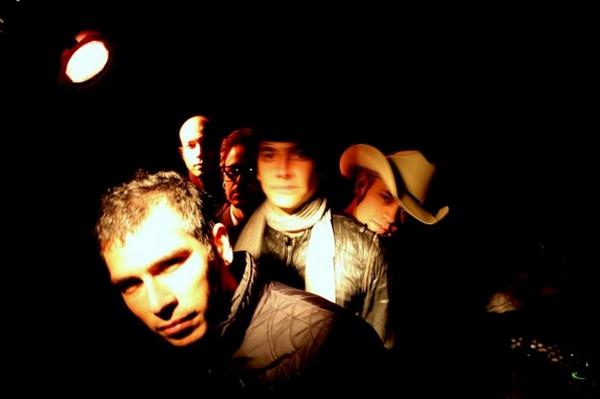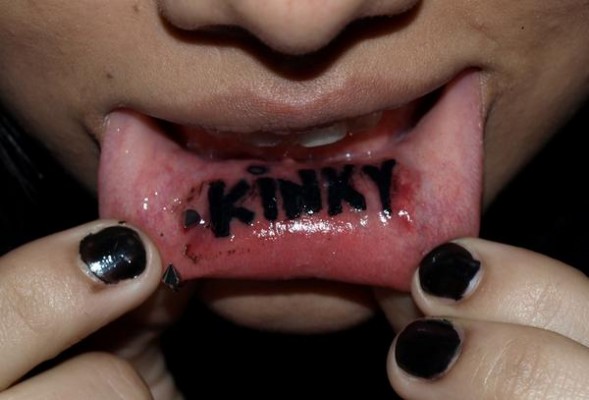Kinky: Last Band Standing

Kinky sounds like a band name that a bunch of hormonal teenage boys would think up for their fledgling after-school punk project. But that didn’t stop a friend of mine from buying a T-shirt at one of their shows, a decision she regretted after wearing the shirt for less than a day and getting gross looks from creepy dudes. Needless to say, she never wore that shirt again. But, questionable moniker aside, Kinky has been making their unique brand of electro rock for 12 years now, captivating not only a Latin American audience, but an international one as well. They’ve played festivals like Vive Latino, Coachella, and most recently Austin City Limits, and toured with bands like Modest Mouse and The Flaming Lips. Now Kinky is working on their fifth studio album, to be released in March or April of 2011, and we talked to frontman Gil Cerezo about the process.
_____________________________________________________________
So you say your album is going to tell a story as a whole. What kind of story are you telling?
It’s a story that lines up with these times of chaos and hyper violence and information saturation. It’s about someone living in a city in Latin America; it could be any city, really. There’s a very apocalyptic feeling, of an impending end of times. A night like any other night, but at the same time very apocalyptic.
______________________________________________
“IT’S GOING TO BE AN ALBUM OF LANDSCAPES,
VERY PSYCHEDELIC, A BIT CONCEPTUAL.“
______________________________________________
I know in the past you’ve had a mix of English- and Spanish-language songs on your albums. Is that also the case for the new album?
For now, we envision the majority of, if not the whole, album to be in Spanish. But it all depends on if we have guests on the album and having a better idea of where the album is going. Musically, it’s a lot easier to write in English, ideas solidify themselves a lot quicker in English. And we don’t try to translate our music, we go with whatever language it naturally comes out in. In the case of this album, because of the concept of it, everything is in Spanish right now.
You’ve experimented with quite a few styles in the past. Are there any others that you would like to try out?
We’ve been pretty loyal to the electronic rock aesthetic, with a bit of funk twist. Lately, you can hear a lot of African influences with the percussion. We hope that the new album spawns new and interesting sounds, and we really want to incorporate folkloric and more regional styles, maybe add a tuba, give it a bit of a banda feel.
Do you prefer playing in smaller venues or festival settings?
We like them both. What’s great about festivals is that you share the experience with a lot of different people and musicians. A lot of people discover your music at festivals. When it’s a smaller venue that you’re headlining it’s more “all about me,” it’s like throwing a party and doing whatever you want.
Who have been some of your favorite bands that you’ve met at festivals?
The Flaming Lips and De La Soul. We met them during one of our earlier U.S. tours. We’ve always shared a lot in common with them. Another band is Thievery Corporation. We often find our tours coinciding in different cities all over the world. In cases like this, you end up sharing not just the music and touring experience, but the experience of being in a foreign place and exploring together.
______________________________________________
“[KINKY] IS KIND OF LIKE A MACHINE
THAT FUNCTIONS ON ITS OWN NOW.“
______________________________________________
Is there a song that you really like to play live?
I really enjoy “Marcha Atrás” and “Por la boca,” from the last album because they both have a story to tell, and I love being able to sing and tell a story at the same time. They’re also both very different from what we’re accustomed to doing.
You recently played “The Sweater Song” with Weezer in L.A. How did that come about?
It was all very spontaneous. They knew that we were in town working on the album and invited us to the show. Aside from Weezer being already one of the legendary bands of Los Angeles, they also influenced me early on in my career because I listened to their music when I was younger. It was fun sharing that moment, however brief, with them.
What are you listening to right now?
I really like what Bassnectar is doing, also Sleigh Bells. It feels very fresh. There’s also this guy in Mexico, Rey Pila, who’s doing interesting things.
You did a remix of Rey Pila’s “No. 114,” right?
I did. That was the first single from his album and I did all the mixing at home with my own equipment. It was a lot of fun.
What’s next for Kinky?
For now, just finish this album and make the most interesting, fun music that we can.
_____________________________________________________________
 Can you tell me about the album and what the process of writing and recording has been like?
Can you tell me about the album and what the process of writing and recording has been like?
 You’ve all been playing together for a long time now. Has it come to the point that you know each other so well that you can anticipate each other’s moves, or do you still surprise each other sometimes?
You’ve all been playing together for a long time now. Has it come to the point that you know each other so well that you can anticipate each other’s moves, or do you still surprise each other sometimes?